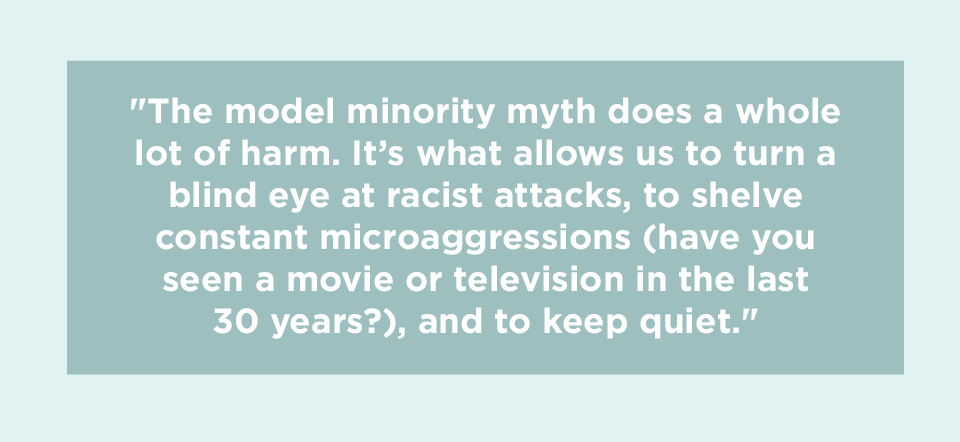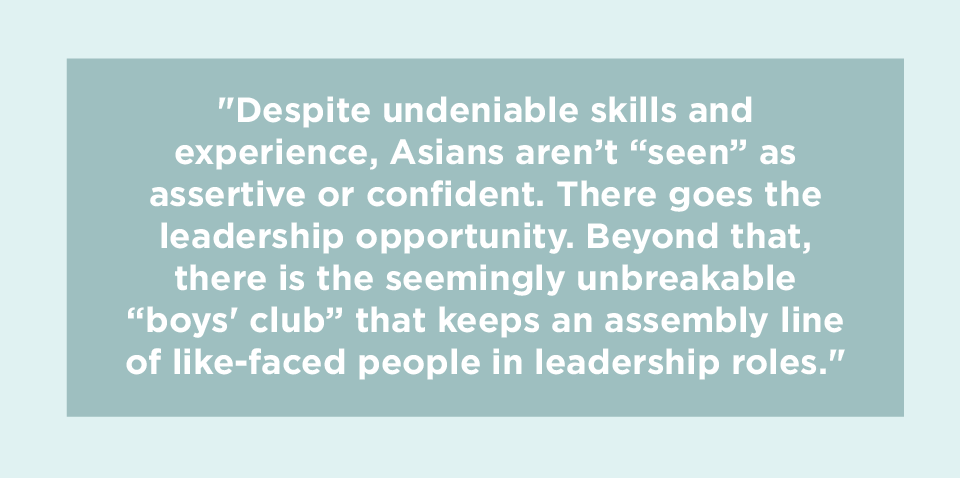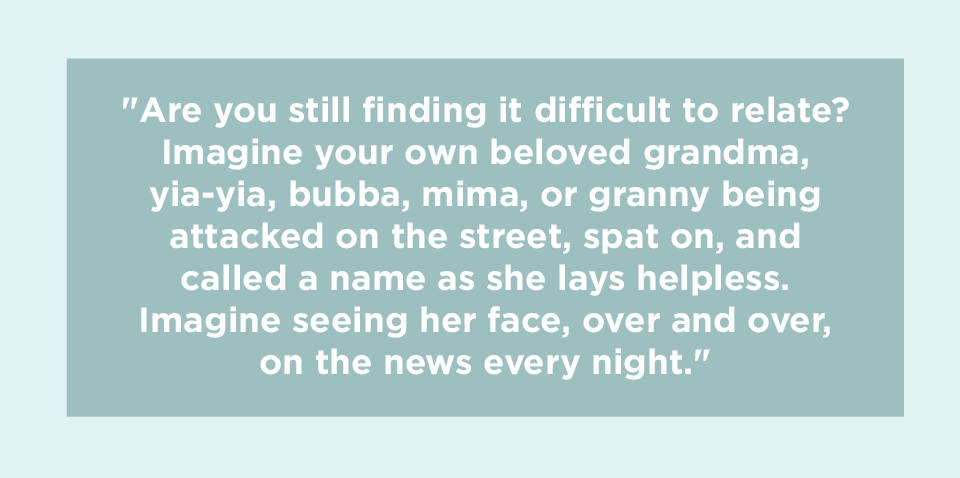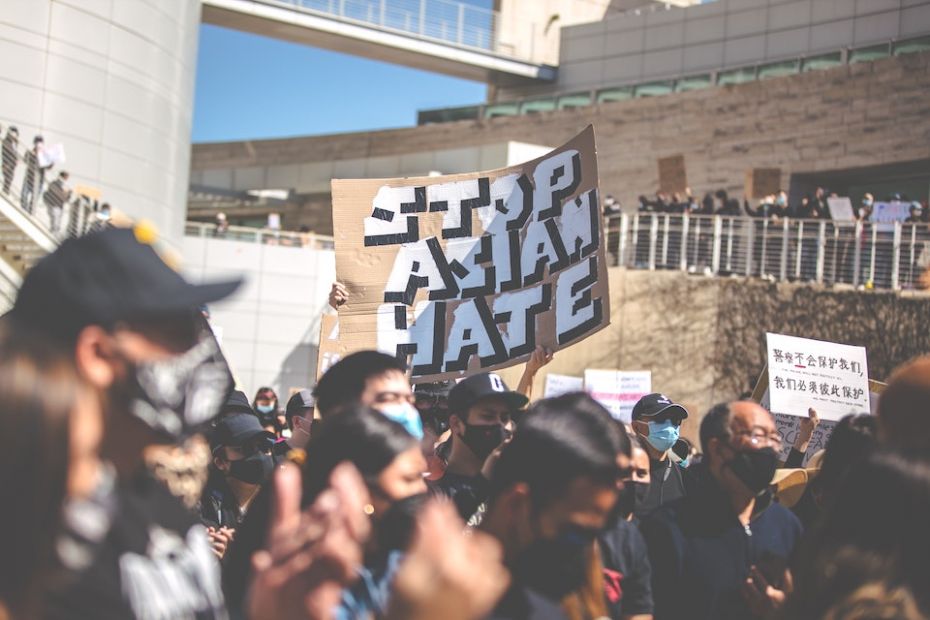This article was written with invaluable insights from Career Contessa Coach Ginny Cheng. Thank you for lending your voice, Ginny.
“We belong here.”
As America “reopens,” we are met with harrowing stories—day after day—of shootings and attacks. One thing many of these atrocities have in common: their racial motivation.
The past year has been defined by reckoning with our country’s racist roots. For many, it has included developing an anti-racist approach to everything. For some, it has felt uncomfortable, dark, and near-impossible—even though this information is literally at our fingertips.
It feels like we have moved nowhere.
Today, we are diving into the critical racism facing Asian Americans and Pacific Islanders—in the streets, in your community, at work, and everywhere.
“But aren’t Asians the most successful people in America?”
What does AAPI mean?
AAPI stands for Asian Americans and Pacific Islanders. API stands for Asian and Pacific Islander. We will be using both acronyms throughout this article.
According to the
Asian Pacific Institute, this term includes "all people of Asian, Asian American or Pacific Islander ancestry, who trace their origins to the countries, states, jurisdictions and/or the diasporic communities of these geographic regions."
How a person chooses to identity can be complex, but we wanted to point out the distinction between the identification as Asian and the identification as Pacific Islander.
The
U.S. Census Bureau currently classifies Asians as "having origins in any of the original peoples of the Far East, Southeast Asia, or the Indian subcontinent," including China, Japan, Thailand, Malaysia, Korea, India, Cambodia, Vietnam, or the Philippines.
However, people from Central Asia (including Kazakhstan, Kyrgyz Republic, Tajikistan, Turkmenistan, and Uzbekistan) or West Asia (including Armenia, Azerbaijan, Bahrain, Cyprus, Georgia, Iraq, Israel, Jordan, Kuwait, Lebanon, Oman, Palestine, Qatar, Saudi Arabia, Syria, Turkey, United Arab Emirates, and Yemen) may or may not identify as Asian.
Pacific Islanders are people with origins belonging to Polynesia, Micronesia, and Melanesia—including native Hawaiian, Samoan, Tahitian, Guamanian, Fijian, and Papua New Guinean people.
Asians as the Perpetual Foreigners
The concept of “belonging” at work is not new.
It’s a human need to be accepted at work in order to survive and to thrive. The right company promotes this internally to ensure psychological safety—not to mention physical safety—as an integral part of the corporate culture.
As a Career Contessa coach, I work with mostly women and People of Color clients that often want to explore this topic deeper—and to understand ways they can feel safe and connected in their work. They want to be heard in their own communication style versus the styles of the dominant culture.
If we expand that need outside of our work and into the greater community, my personal experience (and those of many other Asian Americans) still leave us feeling seen as ”perpetual foreigners." As long as that’s true, we are always navigating a danger in the world.
- “We want to know what you think. Be more verbal and speak up more.”
- “You’re good at math, can you help me with this problem?” and our favorite (read: least favorite):
- “But, seriously, what are you?”
The Problem With Remaining Politely Quiet, The Model Minority Myth + The Bamboo Ceiling
Often, we are depicted as a community that chooses not to speak up—a culture dedicated to putting our heads down in order to not make any waves.
Asian-Americans are constantly confronted with the model minority myth. This is the idea that Asians are well-educated, non-threatening, and “desirable” minorities.
As such, they are great neighbors, best in the class, and hard-working! If only every other minority group could look to these idyllic minorities.
The model minority myth does a whole lot of harm. It’s what allows us to turn a blind eye at racist attacks, to shelve constant microaggressions (have you seen a movie or television in the last 30 years?), and to keep quiet.
It also pits Black Americans and the API community against one another—as if acknowledging both streams of racism negates another human’s experience. It doesn’t. To be anti-racist is to be against all forms of racism.
In essence, we have been given the false promise that as long as we continue to keep our heads down and work hard, we can rise through the rank, be successful, and “belong” in Western society.
As a 1.5 generation immigrant from Taiwan, some of the sentiment above rings true and as result, I, along with many APIs, have created an internal dialog of excuses to convince ourselves speaking up isn’t as important:
- “Our experience is not as detrimental to the Black experience in America and therefore it’s not as important.”
- “If mainstream media doesn’t cover our stories, then it’s just not as newsworthy.” (The recent coverage has been an exception.)
- “We still need to keep our heads down in order to maintain the type of ‘success’ we have now.”
- “Microaggressions towards Asians can feel like compliments and are likely not intentional.”
- “Other allies’ voices carry more weight than our own.”
It’s an impossible cycle, but just because these experiences of bias and racism are different does not mean they aren’t both important. Your most dedicated anti-racism activists understand that all racism is crucial to address.
Last, but certainly not least, Asians also experience the Bamboo Ceiling. This term was coined by Jane Hyun in her 2005 book,
Breaking the Bamboo Ceiling: Career Strategies for Asians. Like the “Glass Ceiling,” an invisible but prevalent barrier to women in the workplace, this Bamboo barrier stops Asians from reaching leadership roles.
It’s simple. Asians don’t resemble what leaders are “supposed” to look like. Despite undeniable skills and experience, Asians aren’t “seen” as assertive or confident. There goes the leadership opportunity. Beyond that, there is the seemingly unbreakable “boys' club” that keeps an assembly line of like-faced people in leadership roles.
Allyship in the Workplace
So what now?
Work allyship can be powerful, and sometimes it’s just a simple check-in. It’s in creating a soft, empathetic spot that you can absolutely bring to work.
Offer support early and often. Have tough conversations where your role is to SIMPLY LISTEN.
If you’re in a leadership role and your leadership team is not as represented as you'd like, make sure you take the time to check with your non-white managers and leaders who could be affected by the latest news.
Give ample space and time for your people to process and grieve.
Are you still finding it difficult to relate? Imagine your own beloved grandma, yiayia, bubba, mima, or granny being attacked on the street, spat on, and called a name as she lays helpless. Imagine seeing her face, over and over, on the news every night.
The grieving process is all different, but for AAPIs, it could be a result of the collective interactions—from microaggressions to outright racism—that we have experienced growing up.
It’s the pressure to stay silent in order to keep the status quo. It’s enduring thousands of microaggressions from the playground to the board room.
This is humanity at work. Be human to every human.














